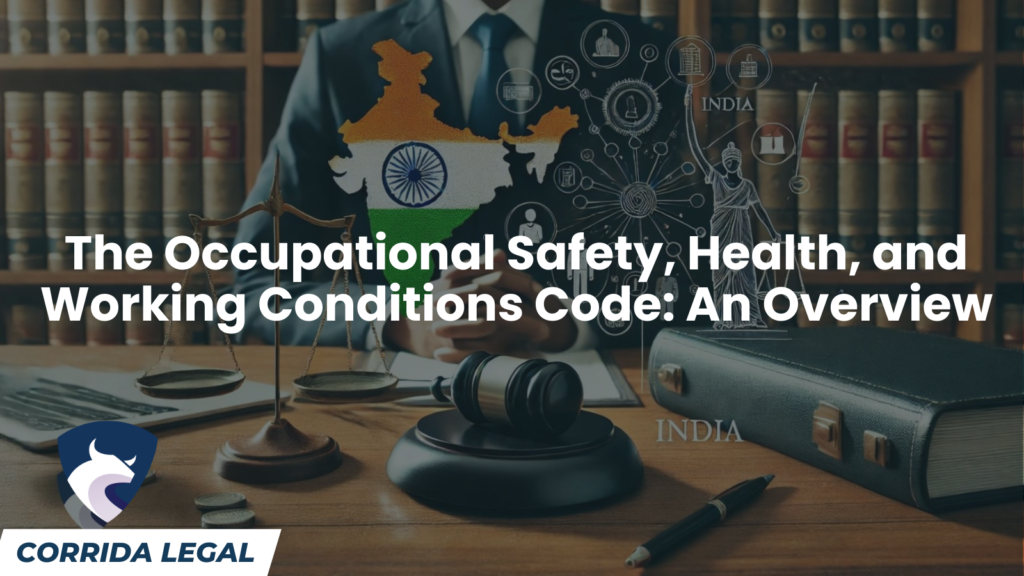The Occupational Safety, Health, and Working Conditions Code, 2020, is a comprehensive legislation aimed at ensuring safe and healthy working conditions for employees in India. This overview provides insights into the key provisions and implications of the Code for employers and employees.
Key Provisions of the Code
- Safety and Health Standards: The Code establishes safety and health standards for workplaces, covering various aspects such as safety equipment, hazardous processes, working conditions, and occupational health services. Employers are required to ensure that workplaces comply with these standards.
- Work Hours and Overtime: The Code specifies the maximum working hours and overtime regulations for employees. It mandates a maximum of eight hours of work per day and 48 hours per week, with provisions for overtime pay for additional hours worked.
- Leave and Benefits: The Code provides for various types of leave, including annual leave, sick leave, and maternity leave. It also includes provisions for benefits such as provident fund, gratuity, and insurance coverage for employees.
- Welfare Facilities: Employers are required to provide welfare facilities such as drinking water, restrooms, first aid, and canteens. These facilities must meet the prescribed standards to ensure the well-being of employees.
- Grievance Redressal Mechanism: The Code mandates the establishment of grievance redressal mechanisms in workplaces to address employee complaints and disputes. Employers must ensure that these mechanisms are accessible and effective.
- Registration and Licensing: The Code requires employers to register their establishments and obtain necessary licenses for certain operations. This helps in ensuring compliance with safety and health regulations.
Implications for Employers
- Compliance Requirements: Employers must comply with the safety, health, and working conditions standards outlined in the Code. This includes conducting regular safety audits, providing necessary safety equipment, and ensuring a safe working environment.
- Record-Keeping and Documentation: Employers are required to maintain accurate records of working hours, leave, benefits, and safety measures. Proper documentation helps in ensuring compliance and addressing any disputes that may arise.
- Training and Awareness: Employers should conduct regular training and awareness programs to educate employees about safety and health standards, their rights, and the grievance redressal mechanism. This helps in promoting a culture of safety and compliance.
- Inspections and Penalties: The Code provides for inspections by government authorities to ensure compliance with safety and health standards. Employers who fail to comply with the provisions of the Code may face penalties, including fines and legal action.
Implications for Employees
- Rights and Protections: The Code provides employees with various rights and protections, including safe working conditions, fair working hours, and access to welfare facilities. Employees can seek redressal for any violations of these rights.
- Leave and Benefits: Employees are entitled to leave and benefits as outlined in the Code. This includes paid leave, maternity benefits, and insurance coverage, ensuring their well-being and financial security.
- Grievance Redressal: The Code mandates the establishment of grievance redressal mechanisms, providing employees with a platform to raise complaints and seek resolution. This helps in addressing workplace issues and ensuring fair treatment.
Challenges and Practical Tips
- Awareness and Implementation: Both employers and employees must be aware of the provisions of the Code and their implications. Regular training and communication can help in better implementation and compliance.
- Workforce Management: Employers should plan for workforce management, ensuring compliance with working hours and leave provisions. This may include hiring temporary staff or redistributing work responsibilities.
- Support Systems: Providing support systems such as safety equipment, welfare facilities, and grievance redressal mechanisms can help in ensuring compliance and promoting a safe and healthy work environment.
Conclusion
The Occupational Safety, Health, and Working Conditions Code, 2020, is a comprehensive legislation aimed at ensuring safe and healthy working conditions for employees in India. By understanding the key provisions and implications of the Code, employers can ensure compliance and create a supportive work environment. These measures help in promoting employee well-being, enhancing productivity, and fostering a positive organizational culture.
Other useful links:
Visit our publication page for detailed articles on contemporary legal issues and updates, including: Key Provisions of the POSH Act and How to Comply, Establishing Internal Committees: Best Practices and Legal Requirements, Navigating Anti-Discrimination Laws in Indian Workplaces
Corrida Legal is a leading Indian law firm with pan-India presence and offices in Gurgaon, New Delhi and Mumbai. Reach out to us on LinkedIn or contact us at contact@corridalegal.com/+91-9211410147 in case you require any legal assistance.


